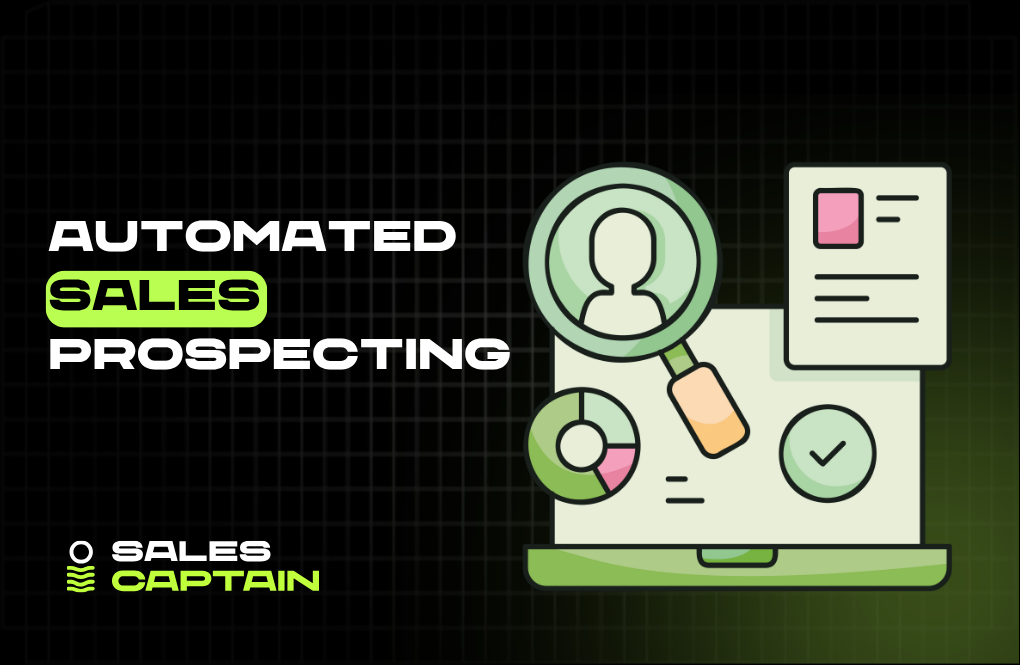

Email Marketing for Agencies in 2025: Tools, Strategies, and Campaign Playbooks

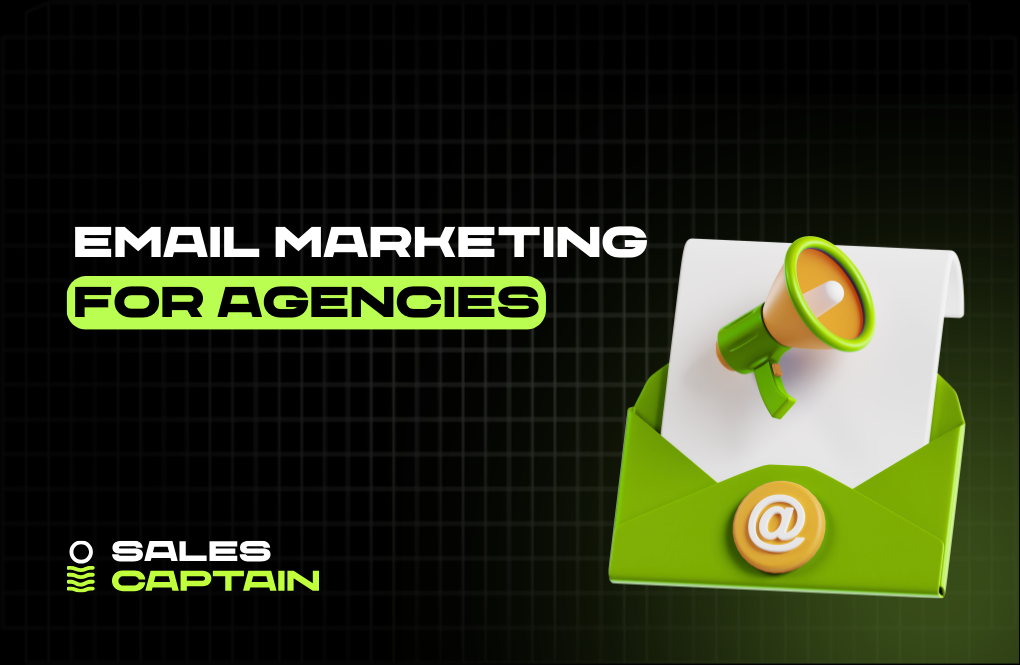
Email marketing isn’t dead, in fact, for agencies it’s the most reliable growth engine in 2025. While social platforms come and go, the inbox remains a direct, trusted channel for B2B buyers and consumers alike. For agencies, email is more than newsletters. It’s how you run outbound, nurture leads, onboard clients, and drive upsells. With automation, data enrichment, and AI-powered workflows, email becomes infrastructure. Agencies that master it don’t just deliver campaigns, they build scalable GTM systems that make clients stick around longer and generate compounding ROI.
Email Marketing for Agencies: Introduction and Relevance
Why Email Marketing Still Matters for Agencies in 2025
Email is the original growth lever. It outlasted MySpace. It outperforms social. It still drives ridiculous ROI.
In a world flooded with LinkedIn DMs and Slack notifications, the inbox remains sacred. People check email with intent. Decision-makers still buy through email. And for agencies who live and die by outcomes, that matters.
This isn’t just about sending newsletters. Email is infrastructure. It's how you run outbound, nurture leads, onboard clients, and generate upsells. Especially now, when AI makes outbound scalable, email is where your automated systems meet human interaction.
If your agency isn’t using email as a core GTM layer, you’re not just behind, you're invisible.
Email Marketing Challenges Agencies Face
Agencies don’t operate like in-house teams.
You’re juggling multiple clients. Different brands, verticals, voice guidelines, and KPIs. You’re trying to drive results while keeping margins intact. All while your tech stack looks like a Jenga tower of client requests, integrations, and last-minute pivots.
Most email tools aren’t built for that. They’re designed for one brand, one funnel, one audience. So you need systems that can handle multi-client complexity without breaking. Not just to send, but to track, analyze, iterate, and scale.
Email marketing for agencies isn’t about pretty templates. It’s about power, repeatability, and speed. It’s about being a GTM system, not just a service provider.
Benefits of Email Marketing for Agencies
How Agencies Use Email to Build Client Relationships
Your clients don’t just want clicks. They want connection. They want their audience nurtured, educated, and converted. That’s what email does, repeatedly and reliably.
Email builds trust fast. Not by sounding slick, but by showing up with context. Personalized campaigns, trigger-based sequences, onboarding flows, these are the touchpoints that turn a lead into a loyal customer.
Agencies that own the email layer don’t just get retained longer. They become integral. You move from vendor to growth partner.
Email Marketing ROI for Agencies
Email has the highest ROI of any marketing channel. That’s not theory, it’s math.
Every dollar spent returns, on average, $36. And when paired with outbound systems powered by intent signals and AI enrichment, email becomes a weapon.
Agencies that build automated outbound and lifecycle flows aren’t chasing leads. Leads come to them. Revenue becomes more predictable. And clients stick around longer because results speak louder than vanity metrics.
This is where agencies become GTM machines, not just campaign vendors.
Using Email Marketing to Build Brand Awareness
Awareness isn’t just top-of-funnel. It’s how people remember. It's how you stay relevant.
For agencies, email is one of the few channels where you control the narrative end-to-end. You can build category authority for clients, repurpose content into nurture flows, and stay top-of-mind without being annoying.
Great email keeps brands warm. It softens the pipeline. It makes cold leads less cold. Done right, it’s a compounding awareness engine that requires zero ad spend.
How to Build an Email Marketing Strategy for Agencies
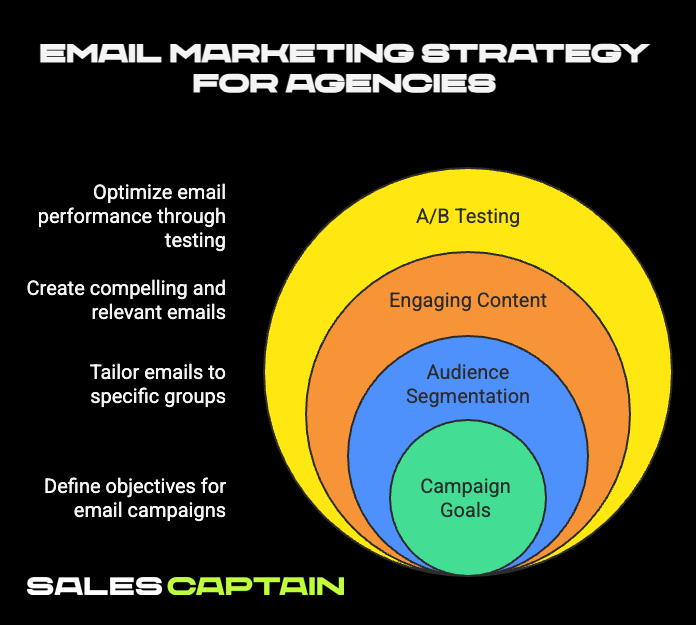
Defining campaign goals
Every email should push toward something. More leads. Higher retention. Faster sales cycles.
Set clear goals by channel and campaign type. Map each to a KPI, open rate is not the goal, pipeline is. A welcome series and a re-engagement sequence are entirely different plays.
Goals drive strategy. Strategy drives automation. Without them, every email is just noise.
Audience segmentation and targeting
Spray-and-pray is dead. Segmentation is the lever.
Split audiences by persona, lifecycle stage, engagement level, or buying intent. Combine first-party data with tools that enrich leads automatically to make it even more powerful.
This is where tools like Clay shine, giving you data-rich segments that actually convert.
With better segmentation, emails feel personal even at scale. That’s how you earn attention.
Building engaging content
No one reads emails. They scan.
Hook fast. Use plain language. Design for mobile. Avoid bloat.
Great agency emails don’t feel like marketing. They feel like a smart human sent something useful. Use social proof. Value first. Stories if they fit. Always include a clear CTA.
If a junior designer can template it overnight, it’s probably forgettable. Spend time where attention lives, the inbox.
A/B testing and optimization
The data is there. Use it.
Test subject lines. Test send times. Test CTA position, tone, even their name in the signature. Then track the outcome and build a feedback loop into your system audits.
Testing isn’t about vanity metrics. It’s about knowing what moves pipeline.
Plan your A/Bs. Measure the right things. Then scale what works. Agencies who test win. Every time.## Types of Email Campaigns Agencies Can Implement
Welcome email sequences
First impressions don’t just matter, they compound.
Welcome sequences set the tone. Whether you're onboarding a new client or helping them engage their own leads, these emails establish voice, value, and expectations.
The best welcome flows feel tailored but scale easily. Triggered on sign-up or form fill, they introduce the brand, deliver quick wins, and keep the momentum going. Think: day-one value, day-three proof, day-five CTA.
Make sure sequence logic accounts for lead source, segment, and action taken. Don’t blast the same intro email to someone who just booked a demo and someone who clicked a blog popup.
Agencies that nail this help clients activate leads faster and unlock downstream results, full-funnel.
Lead nurturing campaigns
Not every lead buys immediately. That doesn’t mean they’re lost.
Nurture campaigns keep leads warm until the timing is right. These flows build context and trust over time. Education, case studies, light CTAs, all drip-fed based on signals.
Use personalization wisely. This is where enrichment tools and dynamic variables pay off. If the content feels generic, it gets ignored. If it feels like it was sent by someone who knows the reader, it gets read.
Nurture isn’t about volume, it’s about timing and resonance. Agencies that automate this well can turn idle leads into inbound pipeline without extra effort.
Re-engagement strategies
Dormant leads are gold, if you wake them up right.
Re-engagement campaigns go after cold lists, inactive users, or unresponsive prospects. But it’s not just sending a “Hey, we miss you” email. It’s reverse-engineering what went wrong, then fixing it in the inbox.
Maybe the offer didn’t hit. Maybe timing was off. Maybe the content was irrelevant. Re-engagement sequences should match the failure point, with new value, different pain points, or updated positioning.
Throw in a time-limited incentive or frictionless ask (reply to this, book in one click) to prompt action.
Your clients' lists are full of ignored opportunity. Agencies who reactivate that dormant demand deliver pipeline that would’ve otherwise stayed dead.
Sales and promotional emails
Not every sale needs a cold call or ad spend.
Sales and promo emails drive immediate action, trials, events, flash offers, product launches. These campaigns cut through when paired with urgency, clarity, and relevance.
But here’s the trap: most promotional emails sound like... promotional emails. Meaning they get ignored.
Good sales sequences are short, personal-ish, and value anchored. They don’t beg. They provoke.
Test new angles, experiment with tone, and always refine based on behavior. This isn’t about a single blast, it’s about building offers into your nurture flows so sales feels organic, not pushy.
For agencies, these campaigns can double as conversion plays and feedback loops. High engagement? You’ve got positioning that resonates.
Best Email Marketing Platform Features for Agencies
Automation capabilities
Without automation, email is just another task. With it, you’re building systems.
Agencies should prioritize platforms that support complex, conditional workflows, think onboarding sequences, lead nurturing paths, time-based drips, and re-engagement triggers.
AI-driven tools like Clay can supercharge this by enriching contact data and dynamically updating segments, making automation smarter and more targeted.
The goal? Set up once, iterate often, scale indefinitely.
Integrations with existing tools
Your CRM. Your lead sourcing tools. Your analytics dashboards.
If the email platform doesn’t integrate, it breaks your GTM. Match your email tool to your existing stack, not the other way around.
Look for native integrations with major CRMs and tools already used by your agency and clients. If your setup requires duct tape just to sync leads, it’s not worth it.
Analytics and reporting tools
If you can’t prove results, you won’t last.
You need to track more than opens and clicks. Look for platforms that break down campaign performance by segment, time, and device. Bonus points for tools with attribution tracking and revenue impact reporting.
Clients want dashboards. Agencies need insight. Good analytics turns subjective feedback into hard data.
Ease of use and scalability
Every new client shouldn’t require a new tech tutorial.
The UI needs to be intuitive enough for content teams, flexible enough for operations, and powerful enough for technical marketers to dive deep. That’s a rare combo.
Scalability matters too. If a client brings 200K new contacts, can your tool handle it? Without breaking workflows or jacking up costs?
Support for multiple clients or brands
This is non-negotiable.
You need workspaces, seats, roles, and permissions. You need to send from multiple domains with isolated data, yet still manage it from one login.
Multi-client architecture is what separates freelancer tools from agency-grade platforms. If your platform can’t compartmentalize, you’re risking deliverability, security, and sanity.
Best Email Marketing Software for Agencies in 2025
ActiveCampaign
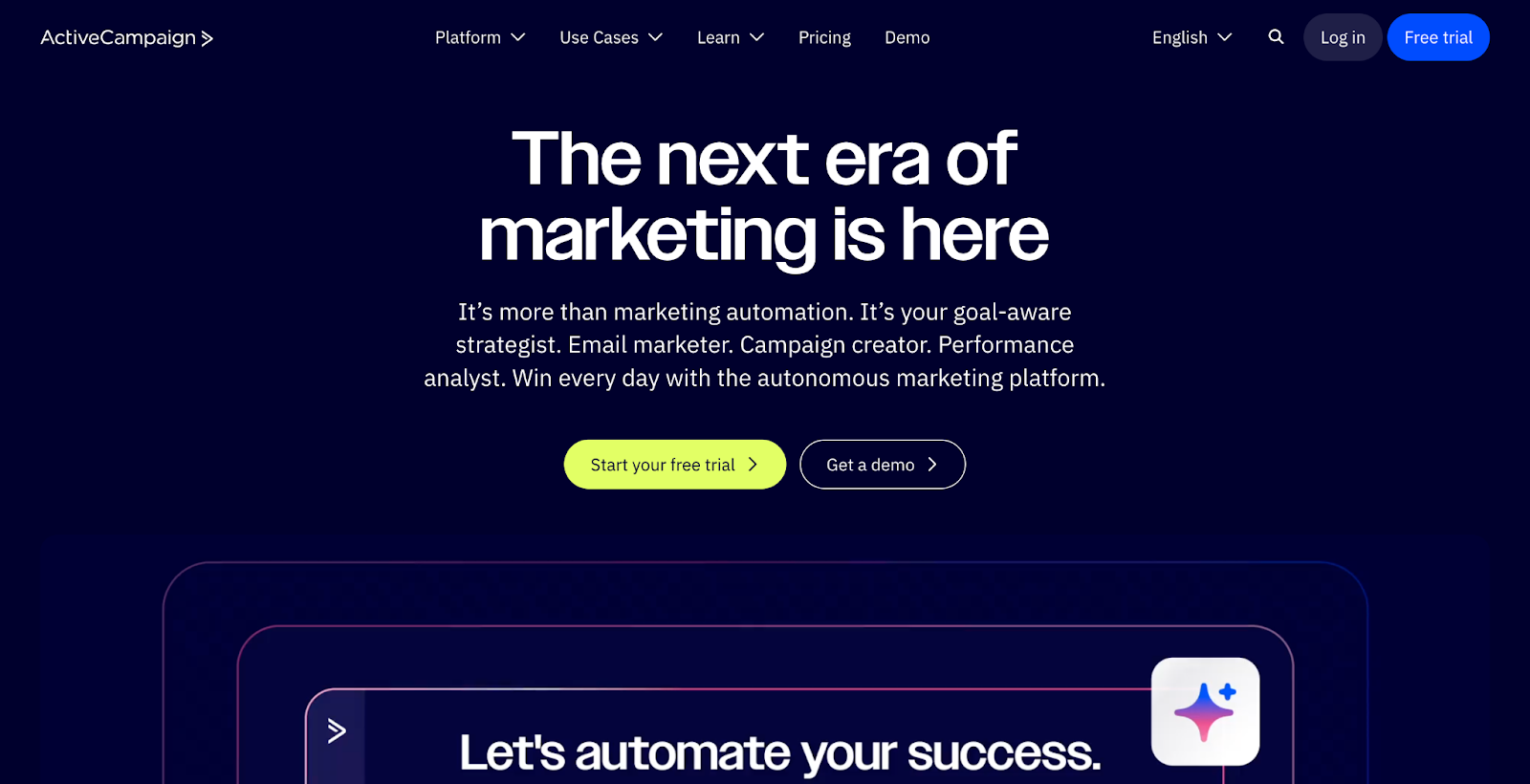
Key Features
- Advanced segmentation and automations
- Built-in CRM and sales pipelines
- Site tracking and attribution
- Conditional content for personalization
Pros and Cons
✔ Powerful automation logic
✔ Solid value for mid-sized agencies
✔ Strong native integrations
✘ Steep learning curve
✘ UI can feel clunky at scale
Pricing
Starts at $29/month for Lite, but most agencies go for Plus or Professional tiers, which start at $49 and $149/month respectively.
HubSpot

Key Features
- Full CRM + marketing automation suite
- Drag-and-drop email builder
- Lead scoring and behavioral triggers
- Built-in reporting and dashboards
Pros and Cons
✔ All-in-one GTM suite
✔ Ideal for content-driven campaigns
✔ Great for client handoff
✘ Expensive fast
✘ Some features locked behind high tiers
Pricing
Free tier available, but serious automation requires Marketing Hub Pro at $800/month and up.
Mailchimp
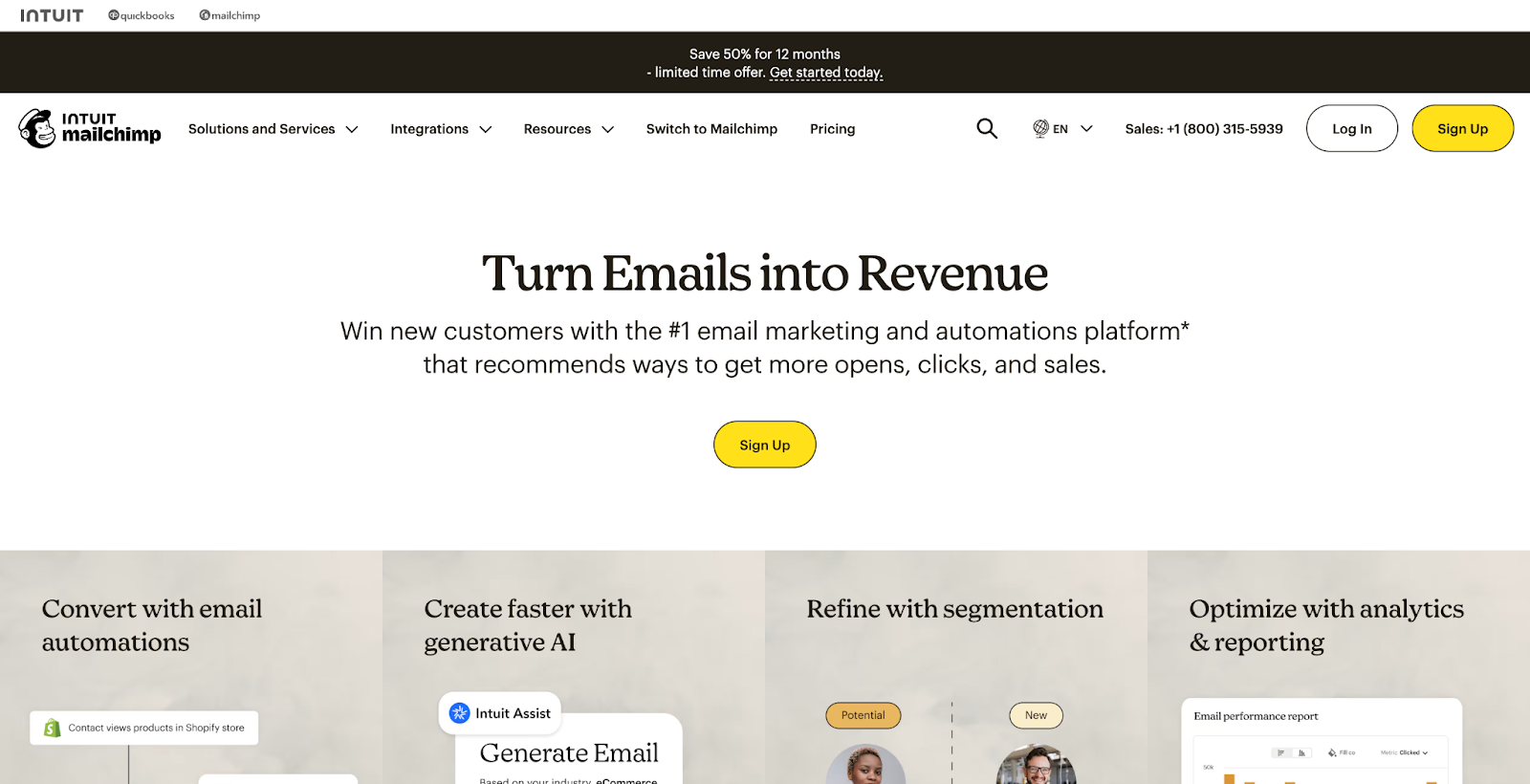
Key Features
- Easy-to-use campaign builder
- Prebuilt email templates
- Basic automations and tagging
- Audience insights
Pros and Cons
✔ Beginner-friendly UI
✔ Affordable for small-scale campaigns
✘ Lacks deep automation
✘ Limited scalability for agencies
Pricing
Free tier for under 500 contacts. Paid tiers start at $13/month but advanced features start closer to $60/month.
Brevo

Key Features
- Email, SMS, WhatsApp integrations
- Visual automation builder
- Transactional email support
- Shared inbox for collaboration
Pros and Cons
✔ Affordable for growing agencies
✔ Decent automation tools
✔ Multi-channel messaging
✘ UI isn’t the smoothest
✘ Reporting is pretty basic
Pricing
Free for up to 300 emails/day. Paid tiers start at $25/month.
Drip
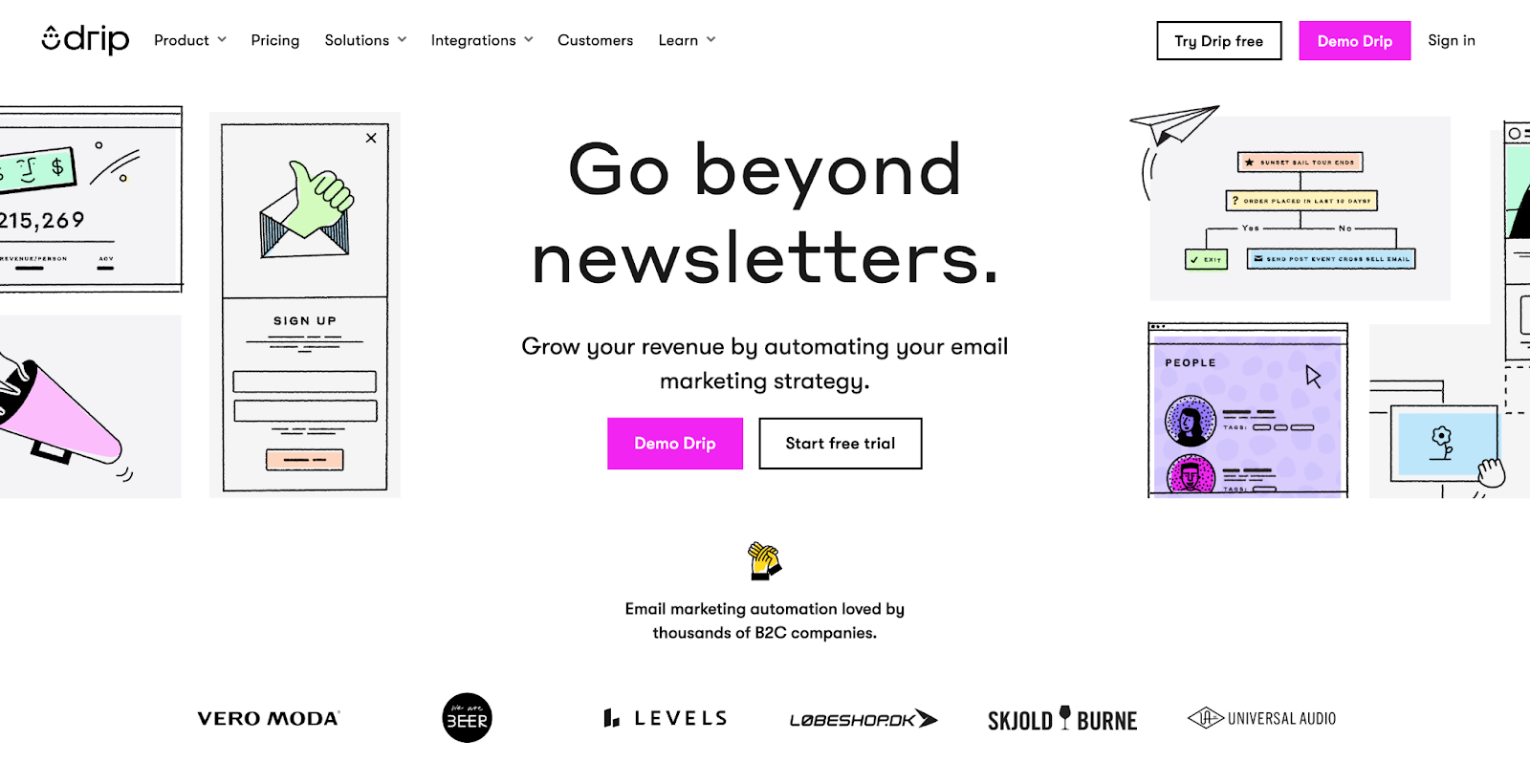
Key Features
- Designed for ecommerce automation
- Behavior-based triggers
- Strong segmentation tools
- Visual workflow builder
Pros and Cons
✔ Deep ecommerce integrations
✔ Easy to design complex flows
✔ Excellent for product-led brands
✘ Not ideal for non-ecommerce use cases
✘ Limited CRM capabilities
Pricing
Starts around $39/month based on subscriber count. Pricing scales aggressively with list size.
Salesforce Marketing Cloud
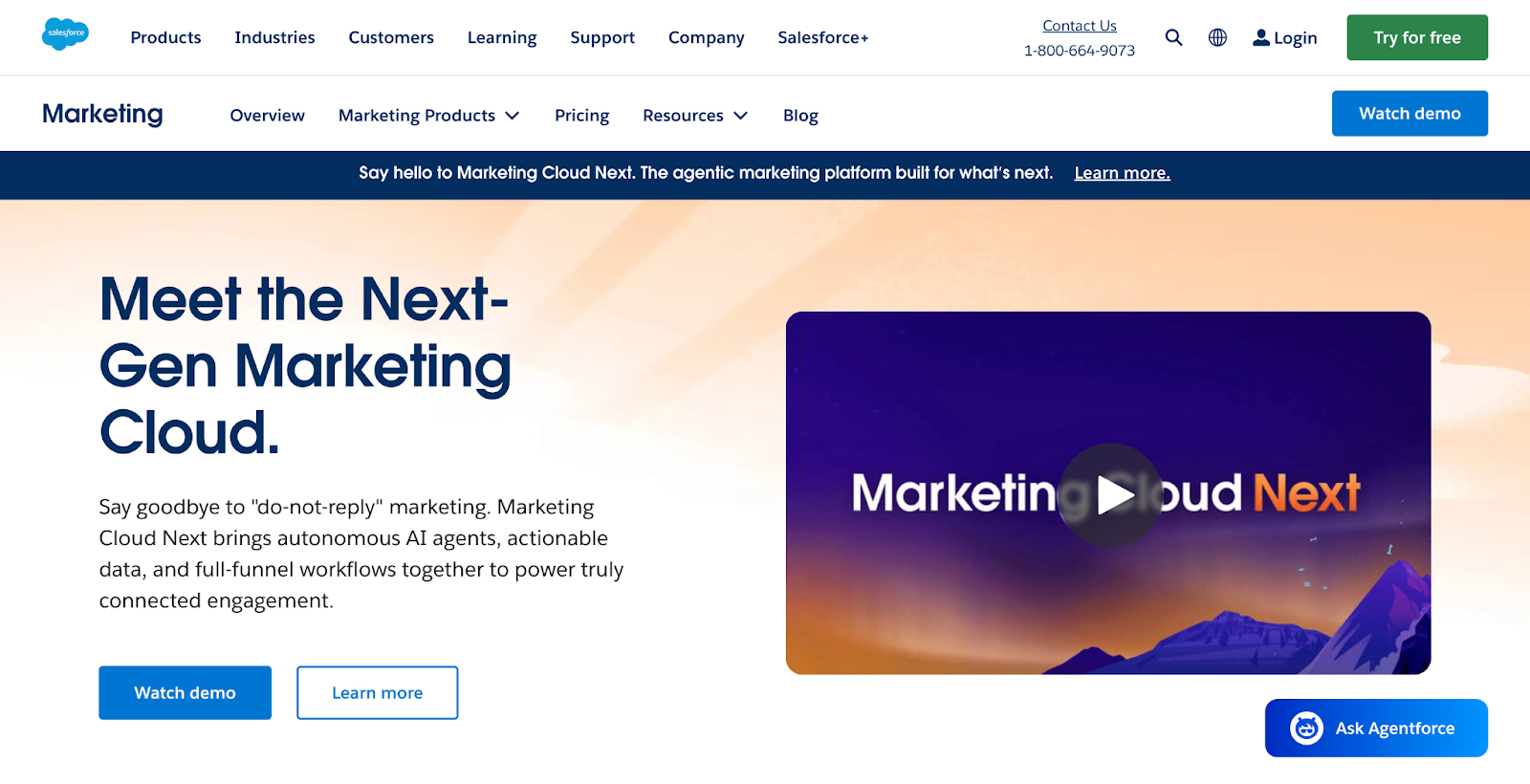
Key Features
- Enterprise-grade marketing automation
- Cross-channel campaign management
- Predictive AI and insights
- Deep Salesforce CRM integration
Pros and Cons
✔ Insane power and customization
✔ Ideal for large-scale operations
✔ Supports cross-channel orchestration
✘ Complex onboarding
✘ High cost + dev resources often needed
Pricing
Custom quotes only. Expect enterprise pricing, typically five figures annually.
New Trends in Agency Email Marketing
Utilization of interactive content
Static emails are flat. Interactive ones make people click.
Agencies can now embed polls, carousels, product previews, or even in-email forms. Engagement skyrockets when users can interact without leaving the inbox.
This isn’t just for B2C. B2B audiences love frictionless UX too, and agencies that use interactive elements help clients shorten feedback cycles, qualify leads instantly, and drive deeper engagement.
Use it wisely, though. Interactive doesn’t mean gimmicky. It means function layered on top of value.
For example, embed a one-click poll to segment readers by sales readiness. Or let users book a call from the email itself. Every micro-engagement is a signal.
The role of ADA compliance and accessibility
Accessibility isn’t optional. It’s your baseline.
Emails must be usable by everyone, screen reader support, high-contrast design, readable fonts, and simple structure. This matters for legal reasons, yes. But more than that, it’s about reach.
Agencies managing outbound at scale or in regulated markets (finance, healthcare, government) need to bake accessibility directly into templates and reviews.
Marketers talk a lot about inclusive branding. Here’s where it gets real.
The bonus? Accessible design is often cleaner, more focused, and mobile-optimized, which means better results for everyone.
Zero-party data and personalization
Third-party data is fading. Zero-party is the new cheat code.
Zero-party data is volunteered, preferences, industry, budget, timeline, and it’s gold for personalization. Agencies can collect it through forms, quizzes, email surveys, or interaction tracking.
Then plug that intel into campaign logic. Change headlines, offers, send times, all based on what your audience told you directly.
This creates emails that feel hyper-relevant, without creeping people out.
When paired with tools that auto-tag and sort leads based on responses, zero-party data moves from “nice to have” to GTM advantage.
Smart agencies use this to build better segments, launch targeted flows, and remove guesswork from copy and design.
How Agencies Overcome Email Marketing Challenges
Ensuring deliverability and avoiding spam filters
Doesn’t matter how good your content is if it doesn’t land.
Deliverability is often overlooked, until open rates drop off a cliff. Agencies managing multiple sending domains have to go beyond “avoid spammy words.”
You need warmed-up domains, proper DNS records (SPF, DKIM, DMARC), clean lists, and smart sending behavior. That means no spray-and-pray, no buying garbage lists, and regular hygiene routines.
Spam filters are aggressive now. One bad campaign can tank sender reputation across multiple clients.
Treat email reputation like infrastructure, monitor it, maintain it, protect it.
Managing client expectations
Email isn't a magic wand. Clients expect results, but not always with realistic timelines or benchmarks.
Part of your job is education. Explain the lifecycle of a campaign, setup, testing, optimization. Show how short-term metrics feed long-term ROI.
Be transparent about results. Not every campaign pops. What matters is how you iterate.
Setting clear expectations around cadence, KPIs, and input needed from the client (e.g. assets, segmentation guidance, offer approval) keeps everyone aligned.
When an agency acts like a GTM partner, not a campaign vendor, clients start trusting the process, not just the outcomes.
Handling client data and privacy concerns
More data = more responsibility.
Agencies manage contacts, behavioral data, list segments, often across multiple tools and platforms. That’s a minefield if you don’t have frameworks in place.
Stick to secure platforms. Document permissions. Only use client data for agreed-upon purposes. Comply with GDPR, CAN-SPAM, and other regional requirements.
Use role-based access for team members and centralize data control when possible.
Privacy isn’t a legal box to check. It’s brand trust. Screw it up once, and clients won’t give you another shot.
Measuring Email Campaign Performance for Agencies
Key performance indicators (KPIs) to track
Not all metrics matter equally.
Open rate is an indicator, not an outcome. Clicks are potential, not payoff. Agencies need to map KPIs to campaign type.
For example:
- Welcome flows → engagement rate, time-to-first-action
- Nurture → email reply rate, lead score growth
- Re-engagement → unsubscribe vs reactivation ratio
- Sales → conversion, meeting booked, revenue attributed
You’re not tracking vanity, you’re tracking movement. Pipeline. Progress. Payoff.
KPIs should be client-facing and understood by everyone on both sides.
Analyzing open rates, click-through rates, and conversions
This is where campaign auditing begins.
Open and click rates tell you about subject lines and message structure. Conversion rates tell you whether what you’re selling actually resonates.
But don’t analyze in isolation. Layer in segmentation: Which persona clicked more? Which days performed worse? Where do leads drop off?
Build benchmarks by campaign type and client vertical. Don’t just report numbers, extract insight.
Then feed that back into testing.
Reporting to clients effectively
Dashboards are good. Stories are better.
Clients don’t speak in CTR. They speak in pipeline, deals, and “Are we winning?”
Frame reporting around the business impact. Show how email influenced lead velocity, reactivations, or upsells. Share insights, not just stats.
Visualize trends over time. Highlight strategic wins, not just tactical clicks. And always tee up the next test, iteration, or opportunity.
That’s how you stop being the “email team” and become the growth partner.
Frequently Asked Questions
Almost all of them.
If your agency touches growth, demand gen, lead gen, creative, brand, or lifecycle, email should be in your stack.
It’s the only channel that blends outbound motion with inbound nurturing, content distribution with conversion, and automation with personalization.
Whether you're building funnels for SaaS, selling DTC products, or launching info brands, email multiplies impact.
Start with your core use cases and scale requirements.
Do you need multi-client management? Complex automation? Deep integrations with CRMs or lead data tools? Choose platforms that match your GTM motion, not marketing gimmicks.
And test actual workflows before buying. UI friction gets real fast when you're managing 8 clients at once.
It varies massively.
Some platforms are $30/month. Others cost five figures. The range depends on features (automation, data usage, seats), contact volume, and service level.
Also factor in internal costs: time spent setting up, managing clients, creating content, and troubleshooting.
But if you're using email to support outbound systems or lifecycle flows, it shouldn’t be seen as a cost, it’s infrastructure.
Tie metrics to outcomes. Don’t stop at open or click rates.
Success looks like:
- More qualified leads
- Faster sales cycles
- Higher client retention
- Greater CLTV from re-engaged users
Build reporting that maps activity to ROI so you can optimize and scale what works.
Yes, but not all platforms handle this well.
Look for ones with workspaces, permissioning, sending domain control, and isolated data instances. Without that, you’re playing with fire (and risking deliverability cross-contamination).
Serious platforms offer agency plans. Without that, things break fast under real load.
Depends on tier and platform.
Expect base-level documentation and chat for low-cost tools. Premium software usually includes onboarding, dedicated reps, and training.
If email is core to your GTM, pay for support. When campaigns generate pipeline, downtime = cost.
Email connects everything.
It takes the output of content and turns it into nurture. It takes outbound data and turns it into opportunity. It warms leads for sales and reactivates cold ones post-sale.
Think of email as the circulatory system of your GTM, it keeps all the parts moving, cohesive, and responsive.
And when done right, it feeds insights back into the rest of the machine. Agencies like SalesCaptain use outbound and email systems together to create demand, tighten the loop, and accelerate revenue.
RELATED ARTICLES
Check out more articles on our blog!
RELATED ARTICLES
Lorem ipsum dolor sit amet, consectetuer adipiscing elit, sed diam nonummy nibh euismod tincidunt ut laoreet dolore magna aliquam erat volutpat.
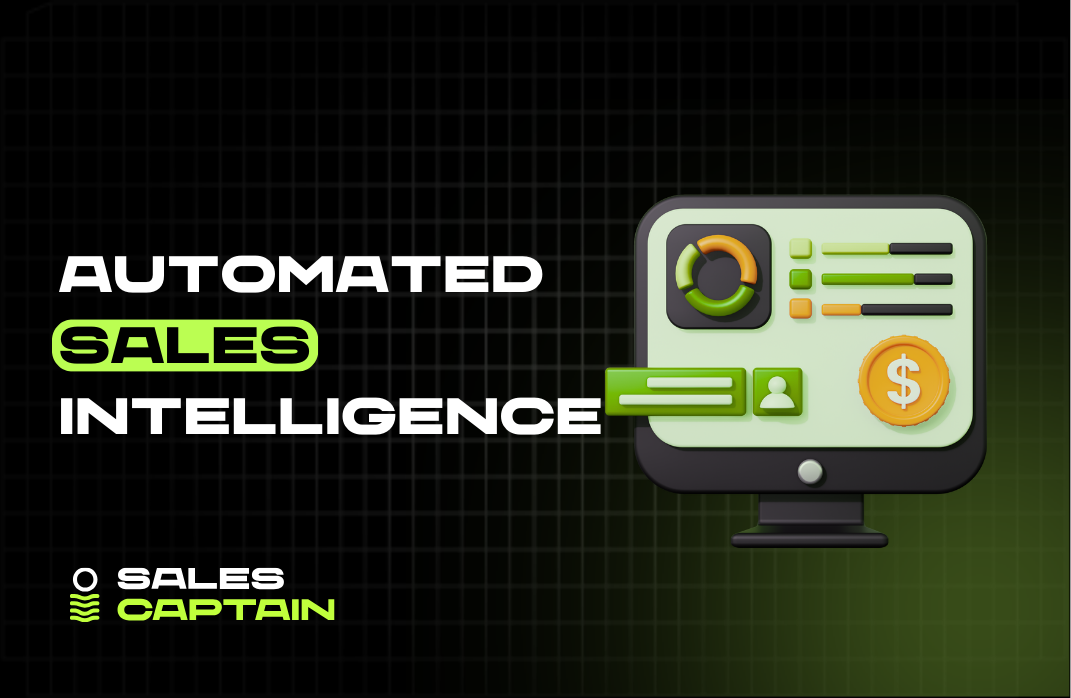

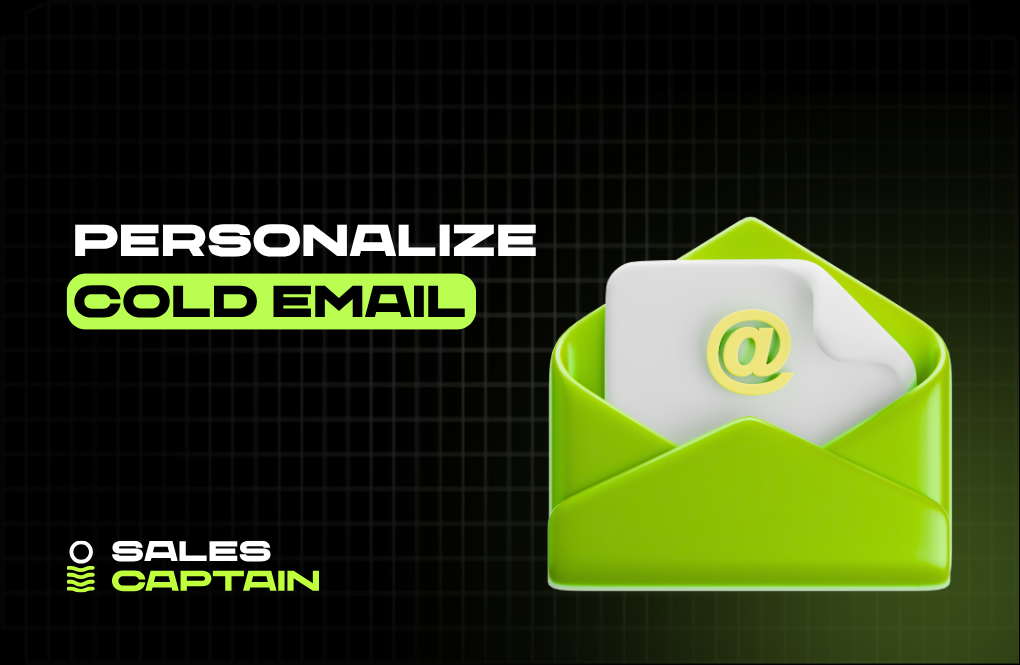

.jpg)

